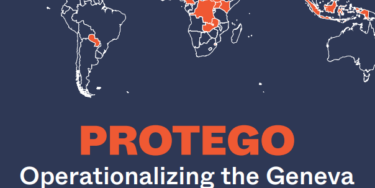The Monitoring Tool provides a means for human rights experts responsible for overseeing compliance with international legal standards on human rights to monitor the implementation of specific State obligations in the field of reproductive rights.
The tool outlines State obligations under international and regional human rights law on a range of reproductive rights issues—freedom from discrimination, contraceptive information and services, safe pregnancy and childbirth, abortion and post-abortion care, comprehensive sexuality education, freedom from violence against women, and HIV/AIDS. The tool then identifies key questions that human rights experts and monitoring bodies can use to assess to what extent a State is in compliance with its obligations.
International standards on reproductive rights are grounded in core human rights treaties and are continuously evolving. International treaty bodies and regional human rights mechanisms play an essential role in ensuring the continued consolidation and elaboration of these standards. In identifying State obligations, the tool relies on international legal standards on these issues as they currently stand, based on authoritative interpretations of major United Nations treaties through General Comments, individual complaints, and concluding observations, as well as standards developed through reports by Special Procedures and regional human rights bodies. This tool is designed to facilitate monitoring of State compliance with these obligations and to support this continued consolidation; it is not intended to be an exhaustive account of these obligations.
In evaluating States’ compliance with their international human rights obligations, experts and monitoring bodies should draw from governmental and non-governmental sources to build up a complete picture: this should include both qualitative and quantitative information. The questions set out in the tool are designed to guide the analysis of this information in line with international standards on reproductive rights, and to enable experts and monitoring bodies to draw specific conclusions and make concrete recommendations for action.
Download PDF

